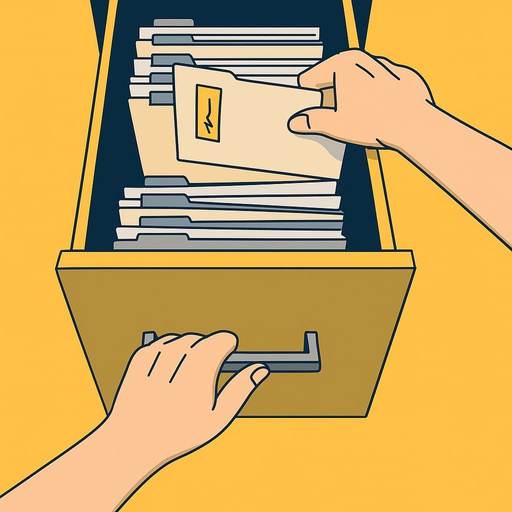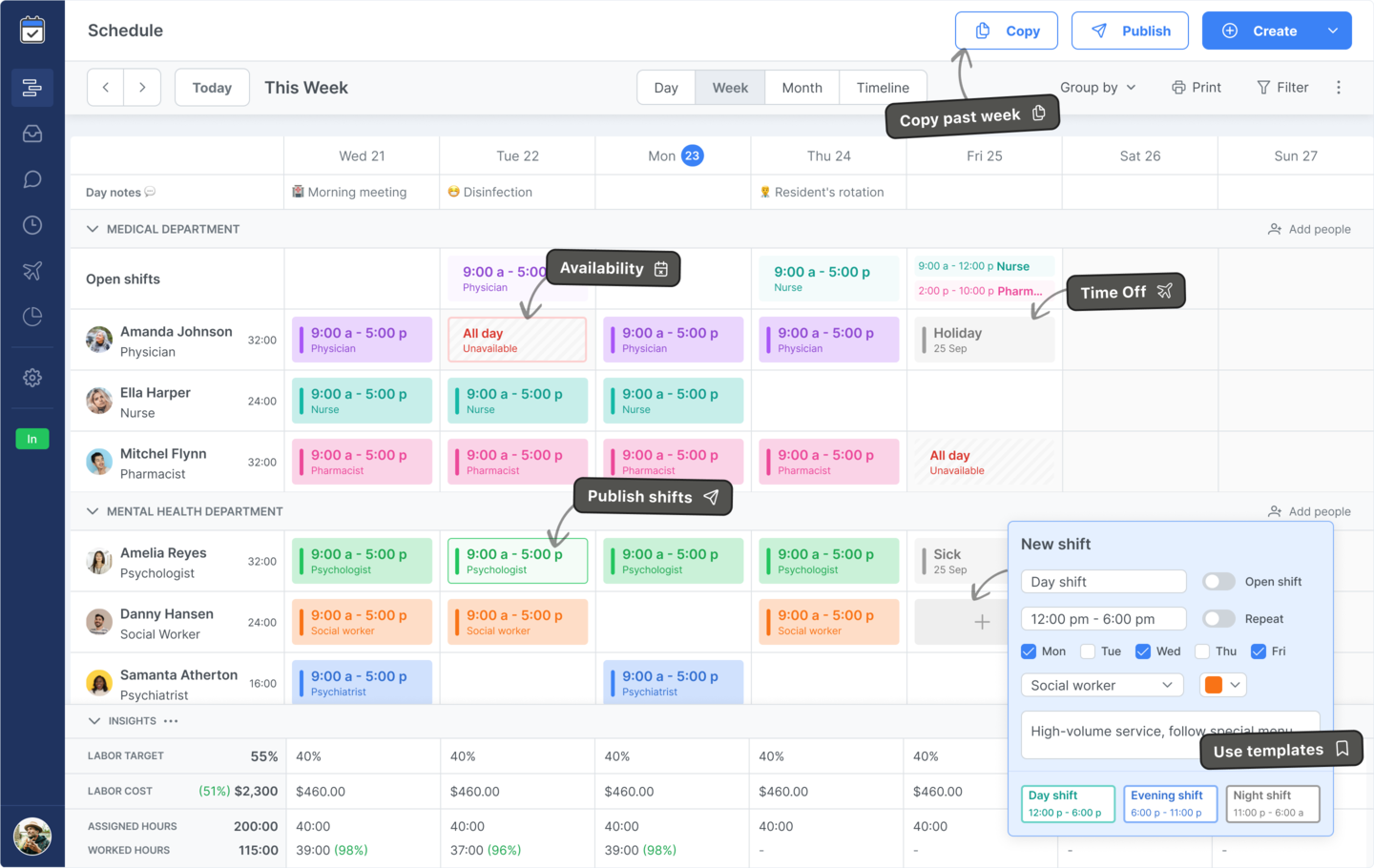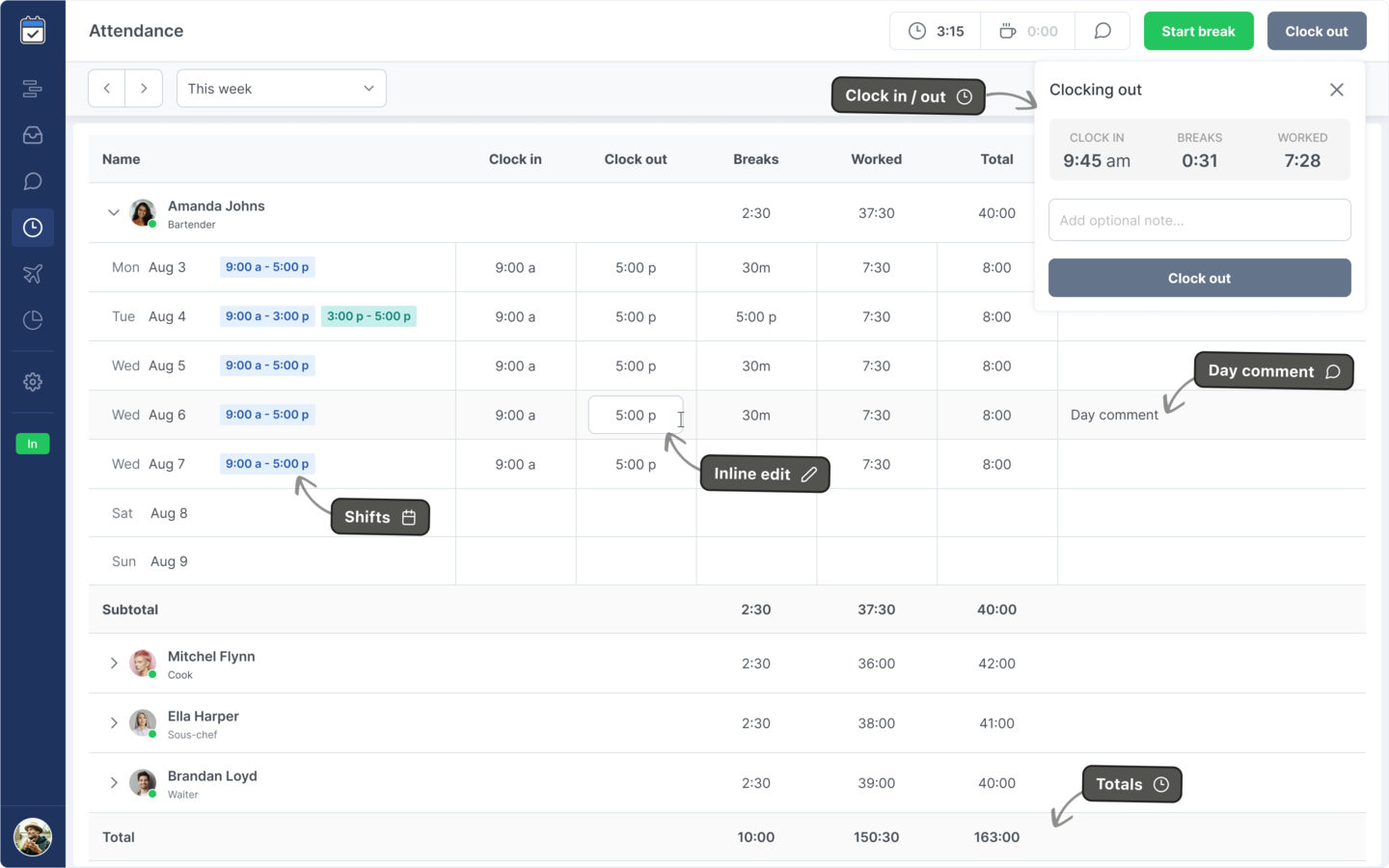A security patrolling checklist is a structured tool that helps security guards systematically document their patrol activities, observations, and any incidents during their shift. It ensures thorough coverage of all checkpoints, maintains accountability, and creates a reliable record of security operations.
Whether you're managing security for office buildings, retail centers, industrial facilities, residential communities, or events, this guide provides a comprehensive template and practical strategies to enhance patrol effectiveness and maintain consistent security standards.
Why security patrolling checklists matter
Security patrol work involves watching over property and people, often for hours at a time across large or complex facilities. Without a structured checklist, guards can easily miss checkpoints, overlook security issues, or fail to document important observations. These gaps create vulnerabilities that can lead to theft, vandalism, safety hazards, or liability issues.
A comprehensive patrol checklist provides accountability and proof of duty completion. It documents that guards were where they were supposed to be, when they were supposed to be there. In the event of an incident or legal dispute, these records become critical evidence showing that proper security procedures were followed.
Beyond documentation, checklists improve patrol quality. They remind guards what to look for at each location, ensure consistent coverage across all shifts, and make it easier to identify patterns or recurring problems. New guards can learn patrol routes and responsibilities more quickly with clear checklists to follow.
For security companies and facility managers, checklists enable better supervision. Reviewing completed checklists helps identify training needs, verify that contracts are being fulfilled, and demonstrate professional service quality to clients.
Types of security patrols and checklists
Different patrol scenarios require different checklist approaches. Understanding these variations helps you create the most effective tool for your specific security needs:
Fixed Post Checklists. For guards stationed at a specific location like a reception desk, gate, or control room. Focus on monitoring activities, visitor management, access control, and alarm system oversight throughout the shift.
Mobile Patrol Checklists. For guards moving between multiple locations or facilities. Include route maps, checkpoint verification, travel times between sites, and vehicle condition checks. Often used by security companies servicing multiple clients.
Building/Facility Patrol Checklists. For guards conducting rounds within a single building or campus. Cover specific areas like parking lots, stairwells, mechanical rooms, perimeter fencing, loading docks, and entrances. Include time stamps for each checkpoint.
Night Patrol Checklists. Specifically designed for overnight security when buildings are closed and risks differ. Emphasize lighting checks, door security, alarm system verification, emergency equipment accessibility, and documentation of any after-hours activity.
Event Security Checklists. For temporary security at concerts, sporting events, conferences, or gatherings. Focus on crowd management, entry/exit points, prohibited items, emergency procedures, and coordination with event staff and emergency services.
What to include in your security patrol checklist
A comprehensive security patrol checklist should be organized logically and cover all critical areas of security responsibility. Below are the essential components:
Shift Information. Date and time of patrol, guard name and ID number, shift type (day/evening/night), location/property name, weather conditions, starting and ending times, supervisor name.
Pre-Patrol Equipment Check. Radio or communication device (charged and functional), flashlight (batteries checked), keys or access cards, uniform and identification badge, mobile device or tablet, incident report forms, first aid kit, defensive equipment if authorized, vehicle condition if applicable.
Perimeter Security. Walk all fence lines checking for damage or breaches, inspect all gates and ensure proper locking, check for signs of attempted entry or tampering, verify lighting is adequate around perimeter, look for suspicious items left near property, check vegetation for visibility concerns, document any security vulnerabilities discovered.
Entry and Exit Points. Verify all doors are locked and secure, check door hardware for damage or tampering, test emergency exits (should be secure but functional), inspect loading dock doors and overhead doors, verify access control systems functioning properly, check for propped doors or disabled locks, ensure no unauthorized modifications to entry points.
Parking Areas. Inspect employee and visitor parking lots, look for unauthorized or suspicious vehicles, check for proper display of parking permits if required, verify adequate lighting throughout parking areas, look for vehicle break-ins or vandalism, ensure parking area gates/barriers functioning, check for abandoned vehicles, note any parking violations.
Building Interior. Check all public areas and common spaces, verify lights are on/off per building schedule, inspect restrooms for safety and cleanliness issues, check stairwells and elevator areas, verify fire doors are not propped open, inspect mechanical rooms and utility areas, check for water leaks or maintenance issues, ensure HVAC systems operating normally, look for safety hazards.
Fire and Life Safety. Verify fire alarm panel shows normal status, check that fire extinguishers are accessible and charged, ensure exit signs are illuminated, verify emergency lighting functioning, check that sprinkler system components visible, ensure fire hose cabinets accessible, verify no storage blocking exits or equipment, test emergency phones if present.
Visitor and Access Control. Log all visitors entering/exiting property, verify identification when required, issue and collect visitor badges, maintain visitor sign-in sheet, monitor access to restricted areas, check that employees badge in properly, report unauthorized access attempts, document any security concerns with visitors.
Surveillance and Monitoring. Review CCTV camera feeds if available, note any camera malfunctions or obstructions, monitor alarm system for any activations, check motion sensors functioning, verify all monitoring equipment operational, document any system alerts or errors, ensure recorded footage backing up properly.
Incidents and Observations. Document any suspicious persons or activities, report safety hazards discovered, note any maintenance issues requiring attention, record any alarms or alerts during patrol, document conversations with employees or visitors, note any policy violations observed, record time and details of any incidents, include names of any witnesses.
End of Patrol. Complete all checkpoint verifications, note total number of patrols conducted, document any areas not accessible, record any equipment issues, ensure all logs properly completed, secure any keys or access devices, brief incoming shift on any concerns, supervisor sign-off if required.
How to create your own security patrol checklist
Start by mapping your facility or patrol area. Walk the entire route yourself, noting every location that needs checking. Identify security-critical areas like entry points, valuable assets, isolated locations, and areas with previous incidents. Your checklist should reflect the actual patrol path guards will follow.
Determine appropriate patrol frequency. Some areas may need hourly checks while others require less frequent attention. Consider factors like location isolation, asset value, historical incidents, and client requirements when setting patrol intervals.
Keep the checklist practical and usable in the field. Guards need to complete it while walking, often at night, sometimes in poor weather. Use clear, simple language. Organize items logically by location or patrol sequence. Leave space for notes and observations without making the form too long.
Include both checkboxes for standard items and open sections for reporting unusual observations. The checkbox items ensure consistency and completeness, while open sections capture the unexpected situations that require documentation and possible response.
Sample Security Patrolling Checklist Template
Below is a comprehensive security patrol checklist suitable for most building and facility security operations. Adapt this template to your specific property and security requirements.
SECURITY PATROL CHECKLIST Property/Facility: _________________________ Date: ____________________________________ Day of Week: ______________________________ Guard Information: Guard Name: _______________________________ Guard ID Number: __________________________ Shift: ☐ Day ☐ Evening ☐ Night ☐ Weekend Patrol Start Time: _________ End Time: _________ Weather Conditions: _______________________ Supervisor: _______________________________ PRE-PATROL EQUIPMENT CHECK ☐ Radio/communication device (charged and tested) ☐ Flashlight (batteries checked) ☐ Keys and access cards ☐ Uniform and ID badge worn properly ☐ Mobile device/tablet (if applicable) ☐ Incident report forms available ☐ First aid kit accessible ☐ Defensive equipment (if authorized) ☐ Vehicle inspected (if applicable) Equipment Issues: ___________________________ ____________________________________________ PERIMETER SECURITY Patrol Time: __________ ☐ North perimeter fence inspected - no damage ☐ East perimeter fence inspected - no damage ☐ South perimeter fence inspected - no damage ☐ West perimeter fence inspected - no damage ☐ All gates secure and locked ☐ No signs of attempted entry or tampering ☐ Perimeter lighting adequate and functioning ☐ No suspicious items near fence line ☐ Vegetation not obstructing visibility ☐ No gaps or breaches in security barrier Perimeter Issues Found: _____________________ ____________________________________________ ENTRY AND EXIT POINTS Patrol Time: __________ ☐ Main entrance doors locked and secure ☐ Side entrance doors locked and secure ☐ Rear entrance doors locked and secure ☐ Loading dock doors secure ☐ Emergency exits secure but functional ☐ No doors propped open ☐ Door hardware intact and functioning ☐ No signs of forced entry or tampering ☐ Access control systems operational ☐ Door locks functioning properly Entry Point Issues: _________________________ ____________________________________________ PARKING AREAS Patrol Time: __________ ☐ Employee parking lot inspected ☐ Visitor parking lot inspected ☐ Executive parking area inspected ☐ No unauthorized vehicles present ☐ All vehicles displaying proper permits (if required) ☐ Parking lot lighting adequate ☐ No signs of vehicle break-ins or vandalism ☐ Parking gates/barriers functioning ☐ No abandoned vehicles ☐ No parking violations requiring attention Suspicious Vehicles (License Plate/Location): ____________________________________________ Parking Area Issues: ________________________ ____________________________________________ BUILDING EXTERIOR Patrol Time: __________ ☐ Building exterior walls - no damage ☐ Windows intact - no broken glass ☐ Exterior lighting functioning properly ☐ No graffiti or vandalism visible ☐ Trash/debris removed from building perimeter ☐ Loading dock area secure and clear ☐ Roof access secured (if accessible) ☐ Utility meters and equipment secure ☐ Exterior fire escapes clear and accessible Exterior Issues: ____________________________ ____________________________________________ BUILDING INTERIOR - COMMON AREAS Patrol Time: __________ ☐ Main lobby inspected and secure ☐ Hallways and corridors clear ☐ Elevator areas inspected ☐ Stairwells inspected (all floors) ☐ Break rooms/kitchens inspected ☐ Restrooms checked for safety issues ☐ Conference rooms secure ☐ Interior lighting appropriate for time of day ☐ No unauthorized persons in building ☐ No safety hazards present ☐ Temperature comfortable and systems functioning Interior Issues: ____________________________ ____________________________________________ MECHANICAL AND UTILITY AREAS Patrol Time: __________ ☐ Mechanical room door locked and secure ☐ Electrical room accessible only to authorized personnel ☐ No unusual sounds from HVAC equipment ☐ No water leaks or moisture issues ☐ Utility panels and controls secure ☐ No odors indicating gas or chemical leaks ☐ Emergency shut-off locations clear ☐ Equipment operating within normal parameters Mechanical/Utility Issues: __________________ ____________________________________________ FIRE AND LIFE SAFETY SYSTEMS Patrol Time: __________ ☐ Fire alarm panel showing normal status ☐ Fire extinguishers accessible and charged ☐ Exit signs illuminated throughout building ☐ Emergency lighting functional ☐ Fire hose cabinets accessible ☐ Sprinkler heads unobstructed ☐ Fire doors not propped open ☐ Exit routes clear and unobstructed ☐ Fire pull stations visible and accessible ☐ Emergency phone locations functional (if applicable) Fire/Safety Issues: _________________________ ____________________________________________ VISITOR AND ACCESS CONTROL Patrol Time: __________ ☐ Visitor log reviewed and current ☐ All visitors properly signed in/out ☐ Visitor badges issued and collected ☐ No unauthorized persons in restricted areas ☐ Employee access badge system functioning ☐ Access control doors locking properly ☐ Turnstiles or access gates operational ☐ No tailgating or unauthorized access observed Visitors Present After Hours: Name: _____________ Badge #: ___ Time: _____ Name: _____________ Badge #: ___ Time: _____ Access Control Issues: ______________________ ____________________________________________ SURVEILLANCE AND ALARM SYSTEMS Patrol Time: __________ ☐ CCTV system operational ☐ All cameras functioning and properly aimed ☐ Recording system operational ☐ Monitor displays clear and visible ☐ No camera obstructions (spider webs, dirt, etc.) ☐ Alarm system showing normal status ☐ Motion sensors functioning ☐ No false alarms during patrol ☐ Backup power systems operational Camera/System Malfunctions: _________________ ____________________________________________ INCIDENT LOG Time: _______ Location: _____________________ Incident Type: ☐ Suspicious Person ☐ Alarm Activation ☐ Safety Hazard ☐ Maintenance Issue ☐ Policy Violation ☐ Other: ___________________________________ Description of Incident: ____________________________________________ ____________________________________________ ____________________________________________ Action Taken: ____________________________________________ ____________________________________________ Witnesses: __________________________________ Supervisor Notified: ☐ Yes ☐ No Time: ______ Additional Incidents (attach separate sheet if needed): ____________________________________________ ____________________________________________ GENERAL OBSERVATIONS Suspicious Persons or Vehicles: ____________________________________________ ____________________________________________ Maintenance Issues Requiring Attention: ____________________________________________ ____________________________________________ Safety Hazards Identified: ____________________________________________ ____________________________________________ Items for Follow-Up: ____________________________________________ ____________________________________________ PATROL SUMMARY Total Number of Complete Patrols: __________ Areas Not Accessible (explain): _____________ ____________________________________________ All Required Checkpoints Verified: ☐ Yes ☐ No If No, explain: _____________________________ ____________________________________________ Equipment Issues Requiring Repair: ____________________________________________ SHIFT HANDOFF NOTES (For incoming guard) ____________________________________________ ____________________________________________ ____________________________________________ ____________________________________________ GUARD CERTIFICATION I certify that I conducted security patrols as indicated above and documented all observations and incidents accurately. Guard Signature: ____________________________ Date: _________________ Time: _______________ SUPERVISOR REVIEW Checklist Reviewed: ☐ Yes ☐ No Follow-Up Required: ☐ Yes ☐ No Supervisor Comments: ____________________________________________ ____________________________________________ Supervisor Signature: _______________________ Date: _________________ Time: _______________
Disclaimer
Important: This security patrolling checklist template is provided for informational and organizational purposes only. While it follows industry best practices for security operations, every facility has unique security requirements based on size, location, assets, threat level, and specific contractual obligations.
This template should be customized to match your specific security needs and does not constitute professional security consulting, legal advice, or a complete security plan. Security operations must comply with local laws, licensing requirements, labor regulations, and industry standards. Always consult with qualified security professionals, legal advisors, and insurance providers to ensure your security program meets all applicable requirements. No legal liability or responsibility is accepted by or on behalf of Everhour, Shifts, or their partners for any errors, omissions, or statements within this document. Everhour and Shifts accept no responsibility for any loss, damage, or inconvenience caused as a result of reliance on this template.
Best practices for security patrol implementation
Train guards thoroughly on checklist use before deploying them. Walk the patrol route together, explain what to look for at each checkpoint, demonstrate proper documentation, and clarify what situations require immediate supervisor notification versus routine reporting.
Establish clear reporting procedures. Guards need to know who to contact when they discover problems, how quickly different issues need escalation, and what happens with completed checklists. Create a chain of command for different incident types.
Review checklists regularly and provide feedback. Don't just collect completed forms and file them away. Supervisors should read patrol logs, look for patterns, identify training opportunities, and acknowledge thorough documentation. When guards know their reports are read and valued, quality improves.
Use technology strategically. Digital checklists on tablets or smartphones can streamline data collection, enable photo documentation, provide GPS verification, and allow real-time incident reporting. However, ensure devices are rugged enough for field use and that guards receive adequate training.
Benefits for security operations
Patrol checklists create accountability and proof of service. They document that contracted security services were actually provided as promised. In disputes about coverage or responses to incidents, detailed patrol logs provide evidence of where guards were and what they observed.
Consistent documentation helps identify patterns and prevent problems. Reviewing patrol logs over time reveals recurring issues like broken lights, damaged fencing, or suspicious vehicles. Addressing these patterns proactively improves overall security.
Checklists improve training efficiency and quality. New guards can learn patrol routes and expectations more quickly with structured checklists. They know exactly what to check and how to document it, reducing the learning curve and maintaining consistent service quality.
Professional, thorough documentation enhances client relationships. Clients who receive detailed patrol reports feel confident their security investment is delivering value. This leads to contract renewals, positive references, and opportunities for additional services.
The bottom line
A comprehensive security patrolling checklist transforms security work from reactive guard presence to systematic, documented protection. It ensures thorough coverage, maintains accountability, and creates records that protect both the property and the security provider.
Start with our detailed template, customize it for your specific facility and security requirements, train your team properly, and review completed checklists regularly. The discipline of systematic patrols and thorough documentation will dramatically improve your security effectiveness and professionalism.





